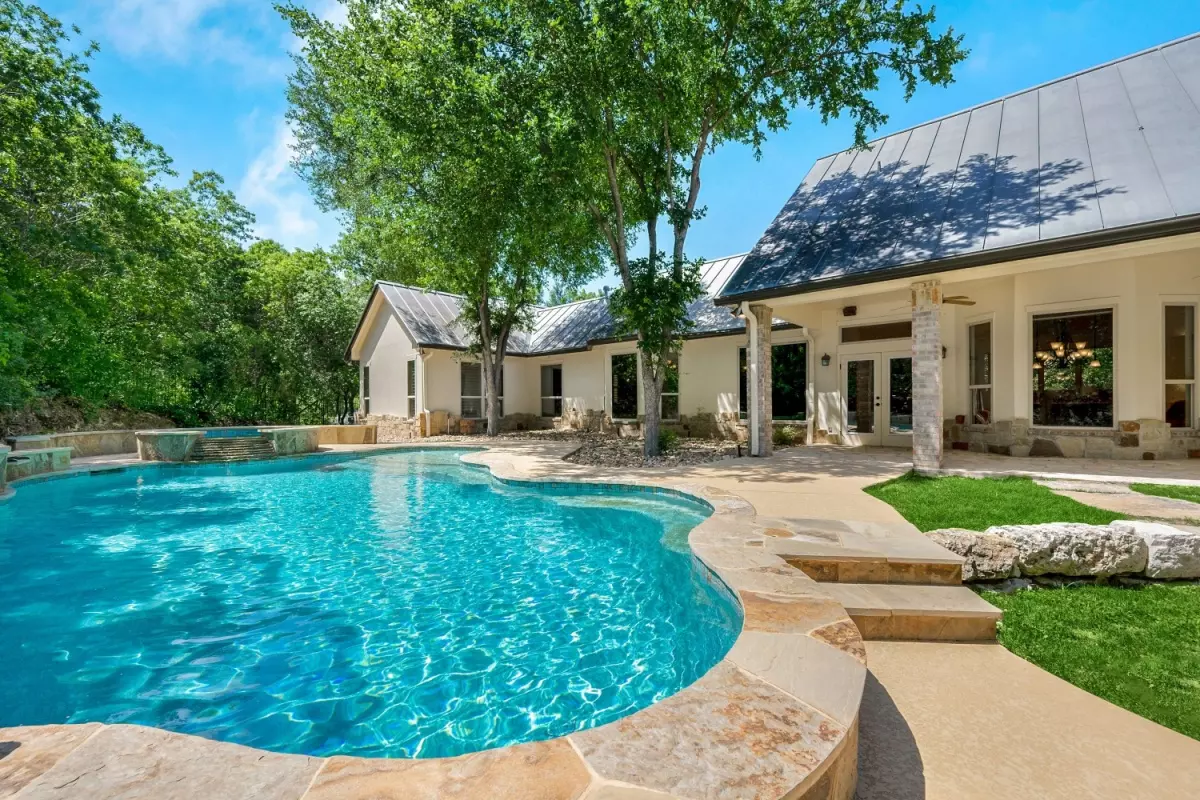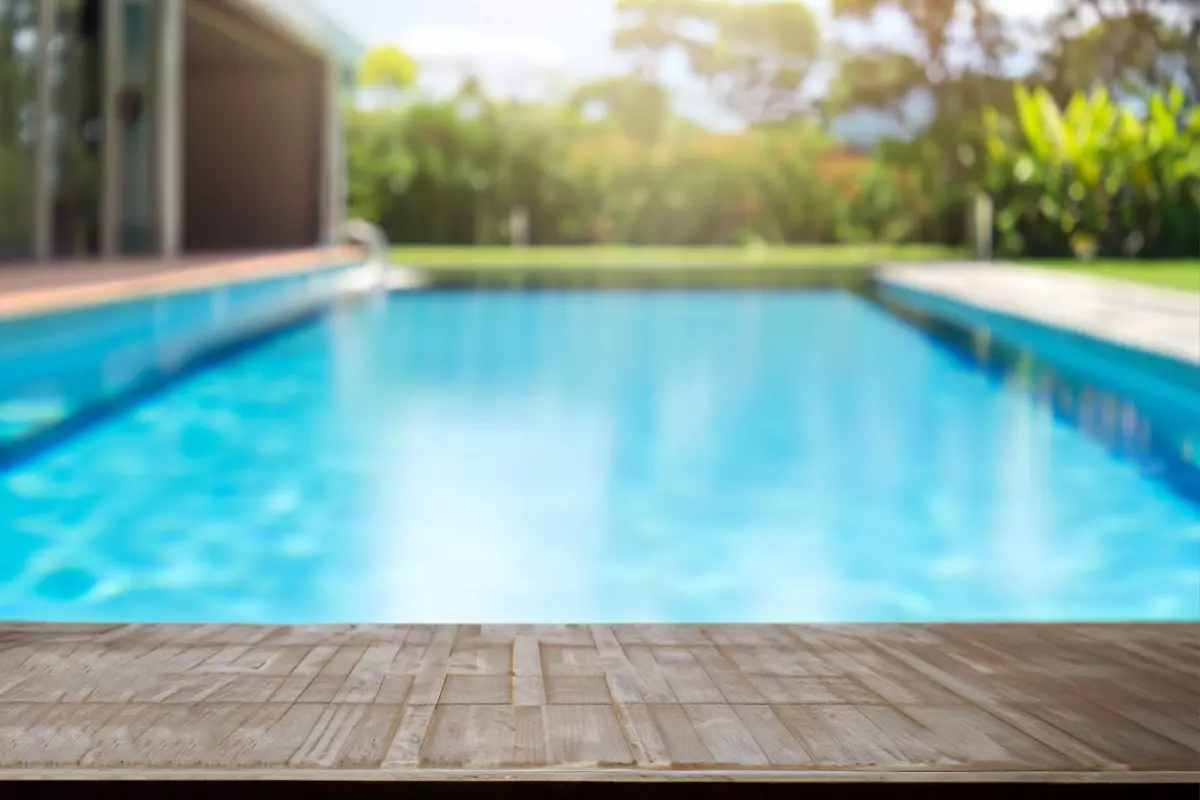“A pool is, after all, a space of leisure, not labor.” This insight from Rebecca Solnit’s Wanderlust: A History of Walking captures what a pool represents in a home — a place for relaxation and an escape from daily chores.

If you’re considering adding such an oasis to your life, you may need help navigating the fiberglass vs. concrete pool debate. Both options have their strengths, but each comes with unique pros and cons. In the article, we will compare these two pool types according to the following criteria:
Read on for our comparison and find out which pool type best suits your backyard.
A fiberglass pool is a one-piece swimming pool made from fiberglass-reinforced plastic that is molded into a specific shape and size in a factory before being delivered to your home.
This is the pool you envision when imagining a quick and seamless installation, ready for summer fun almost as soon as it arrives.
When deciding between a fiberglass pool vs. concrete, it helps to consider the benefits of the former. Here are the main advantages:
There are, of course, some disadvantages of fiberglass pools to be aware of:
A concrete pool, sometimes referred to as a gunite or shotcrete pool, is constructed on-site and offers more versatility in terms of design when comparing a concrete vs. fiberglass pool.
This is the pool that reminds you of sleek, modern resorts, where the design seamlessly blends with its surroundings.
It’s built by spraying a mix of concrete and sand over a rebar framework. Here’s how the building process generally unfolds:
As you can see, the process is much more involved than the easy installation of a fiberglass pool.
Here are some of the main reasons people are willing to go to the extra effort for concrete:

When deciding on the winner of a fiberglass vs. concrete pools matchup, it can come down to these disadvantages:
Now that you’ve learned the basics about fiberglass and concrete pools, let’s explore them further to see how the two options compare.
| Aspect | Fiberglass Pool | Concrete Pool | Winner |
| Pool Cost | A fiberglass inground pool costs between $20,000 and $60,000 nationwide. This price can fluctuate based on size, features, and local labor rates. The upfront cost is higher than some pool types but not as high as concrete. Also, lower maintenance expenses may offset it over time. | Concrete pools range from $35,000 to $100,000 or more. This price variation depends on the pool’s size, design complexity, and finishing details such as tiles, custom steps, and additional features like waterfalls. | Fiberglass |
| Installation | Typically, they can be installed in about one to two weeks. Since the pool arrives pre-made, the main tasks are excavation, setting the pool, connecting plumbing, and backfilling. | As discussed earlier, building a concrete pool is a labor-intensive process. The installation usually spans several weeks to months, commonly around three to six months from start to finish. The design complexity, weather conditions, and contractor schedules can influence the timeline. | Fiberglass |
| Customization | While offering a range of shapes and styles, fiberglass pools are limited to pre-designed molds. This makes them less flexible if you desire a non-standard shape or size. | Customizable to any shape, depth, and style imaginable. Concrete is your go-to whether you want a lazy river, an irregularly shaped lagoon, or a pool that fits perfectly into an awkward space. | Concrete |
| Surface Texture | The gel-coated surface of a fiberglass pool is smooth to the touch, reducing the risk of scraped knees and providing a more comfortable swimming experience. This sleek finish also contributes to the pool’s ease of maintenance. | The texture of a concrete pool can vary depending on the chosen finish. It can range from smooth plaster to textured pebble surfaces. Each offers a different aesthetic and tactile experience but may require more attention to prevent algae growth due to its porosity. | It’s a toss-up |
| Durability | Fiberglass is remarkably durable, flexing to accommodate earth movements that might crack less resilient materials. This flexibility ensures a long lifespan with less likelihood of structural damage. | Concrete pools are the epitome of permanence. They are incredibly durable and can last a lifetime. However, their rigidity makes them more susceptible to cracking in areas with significant freeze-thaw cycles. | Concrete |
| Appearance | These pools offer a modern and clean look, with a shiny, smooth surface in various colors and finishes that resemble natural materials. | They can be adorned with custom tiles, colored plaster, and other luxurious finishes that elevate the backyard into a resort-like setting. | Concrete |
| Maintenance | The non-porous surface simplifies cleaning, significantly reducing the time and chemicals needed to keep the pool pristine. This aspect particularly appeals to those who prefer swimming more than scrubbing. | Requires more rigorous and frequent maintenance routines. The porous nature of concrete means it absorbs chemicals and harbors algae, necessitating more regular, thorough cleaning and chemical balancing to maintain a healthy swimming environment. | Fiberglass |
| Resale Value | Can increase home resale value by up to 8%. | Likely to have a bigger than 8% increase on resale value due to superior durability and aesthetic appeal. | Concrete |
Choosing between fiberglass and concrete pools is not just a matter of taste but also a consideration of lifestyle, budget, and commitment to maintenance. Each type offers unique benefits that can make your home a beloved summer destination or a year-round retreat.

Here are some final tips on how to help you choose between fiberglass pools vs. concrete pools.
Whichever one you choose in the fiberglass vs. concrete pools matchup, you’re on the brink of countless splash-filled days and relaxing evenings. Here’s to making a splash in a pool that’s not just another amenity but a reflection of your home’s personality.